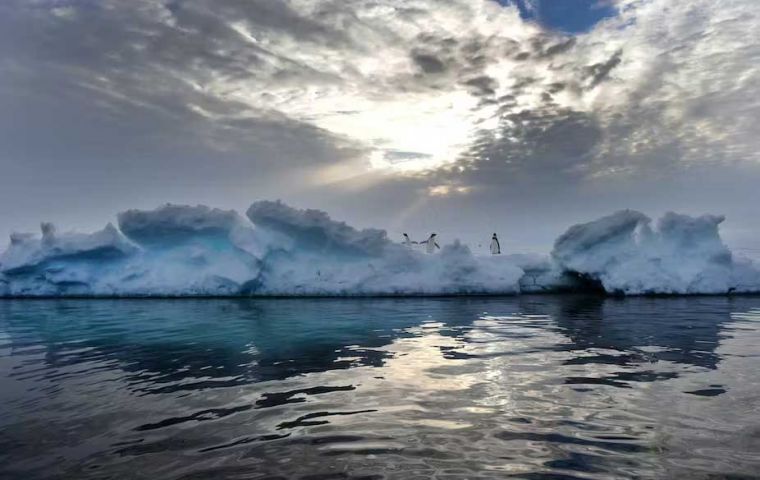MercoPress. South Atlantic News Agency
Concern over the ozone layer hole evolution in austral mid spring, NZ report
 The ozone hole over Antarctica usually opens in September and lasts until November, taking in the Southern Hemisphere’s spring.
The ozone hole over Antarctica usually opens in September and lasts until November, taking in the Southern Hemisphere’s spring. The hole in the Antarctic ozone layer has been getting deeper in austral mid-spring over the last two decades, according to New Zealand researchers working with scientists from Otago University and published in a new study in the journal Nature Communications.
The ozone layer 11 to 40 kilometers above Earth’s surface filters out most of the Sun’s ultraviolet radiation, which can cause skin cancer and cataracts.
From the mid-1970s, chemicals called chlorofluorocarbons (CFCs) — once widely used in aerosols and refrigerators — were found to be reducing ozone levels, creating annual holes largely over the Antarctica region.
The 1987 Montreal Protocol, which banned CFCs in a bid to close the hole, is considered a success story for international environmental cooperation.
In January, a major UN-backed assessment found that the agreement was working. It projected the ozone layer should be restored to 1980 levels over the Antarctic by around 2066. Smaller holes over the Arctic were projected to recover by 2045, and for the rest of the world in around two decades.
But despite the decline in CFCs, there has not yet been a significant reduction in the area covered by the Antarctic ozone hole, according to the New Zealand researchers behind the study in the journal Nature Communications.
And there has been less ozone at the centre of the hole over time, they added.
“Six of the last nine years have had really low ozone amounts and extremely large ozone holes,” study co-author Annika Seppala of New Zealand’s Otago University explained.
“What might be happening is something else is going on in the atmosphere now — possibly because of climate change — and that’s masking some of the recovery,” she said.
The ozone hole over Antarctica usually opens in September and lasts until November, taking in the Southern Hemisphere’s spring.
The researchers said the hole has been opening later in September, indicating a recovery possibly due to CFC reductions.
But in October, when the hole is often largest, the ozone level in the middle stratospheric layer shrunk by 26% from 2004 to 2022, said the study, citing satellite data.
The study’s lead author Hannah Kessenich emphasized that the Montreal Protocol and CFC reductions were still “on track”. But “altogether, our findings reveal the recent, large ozone holes may not be caused just by CFCs,” she added.
The analysis excluded data from the years 2002 and 2019, when “sudden break-ups of the polar vortex” led to significantly smaller ozone holes, Kessenich added.




Top Comments
Disclaimer & comment rulesCommenting for this story is now closed.
If you have a Facebook account, become a fan and comment on our Facebook Page!